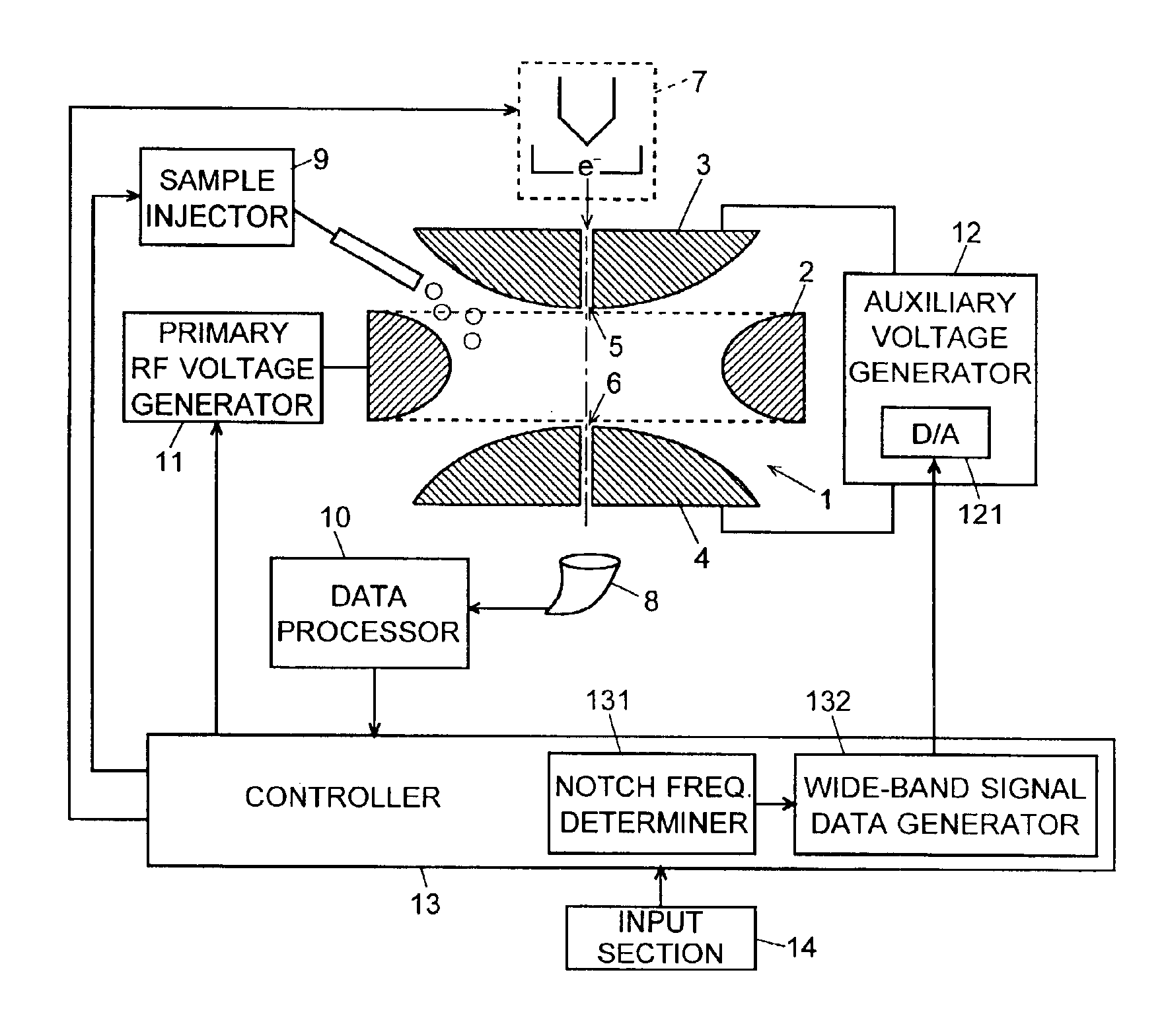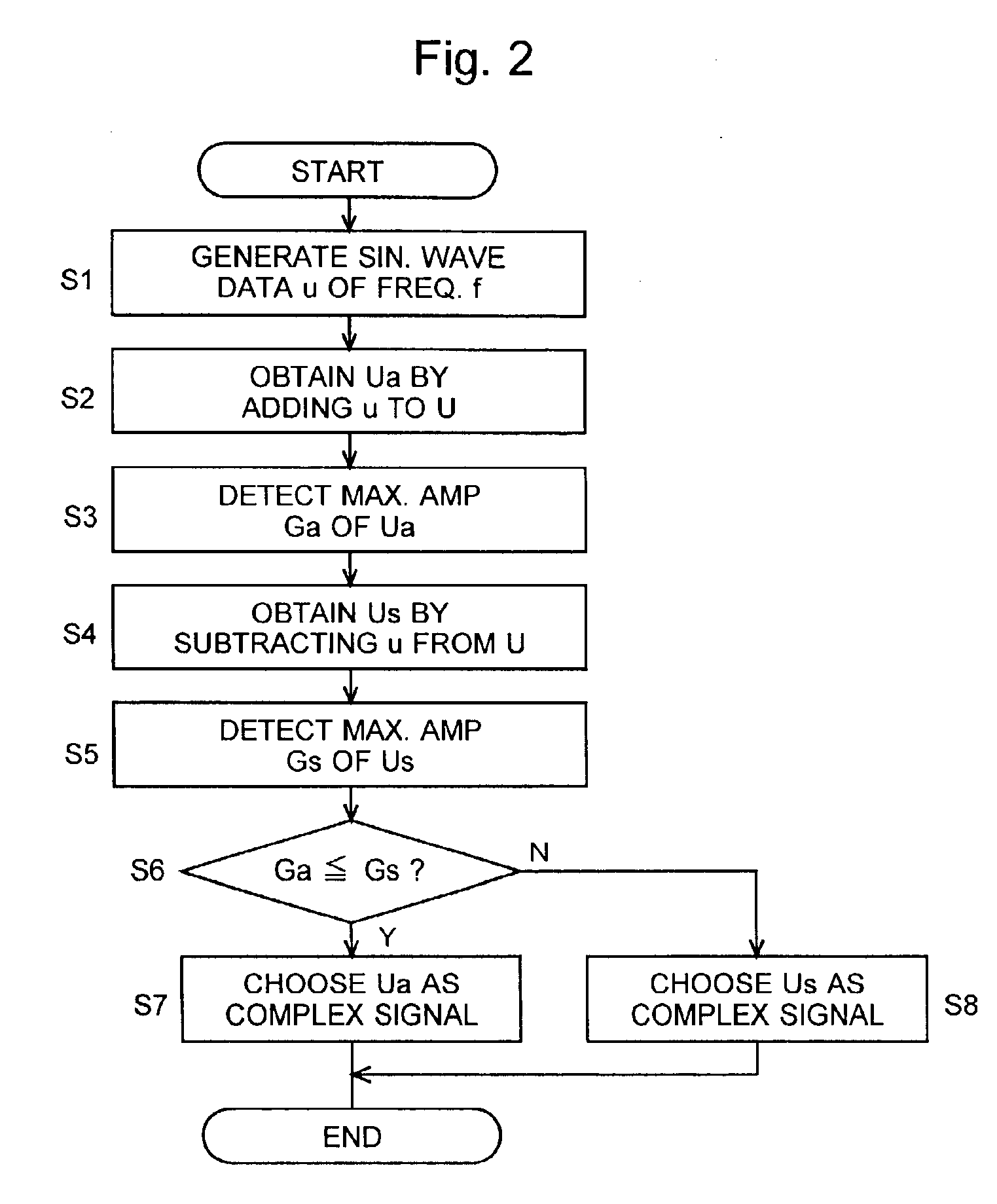Ion trap mass spectrometer
a mass spectrometer and ion trap technology, applied in mass spectrometers, instruments, separation processes, etc., can solve the problems of less precursor ions, less fragment ions, and less amount of precursor ions, so as to improve analysis efficiency and reduce noise coming into a mass spectrum.
- Summary
- Abstract
- Description
- Claims
- Application Information
AI Technical Summary
Benefits of technology
Problems solved by technology
Method used
Image
Examples
Embodiment Construction
An ion trap mass spectrometer embodying the present invention is described referring to the attached drawings. FIG. 1 is a schematic diagram of the ion trap portion and its electrical system of the ion trap mass spectrometer.
The ion trap 1 is substantially composed of a ring electrode 2 and a pair of end cap electrodes 3 and 4 placed opposed to each other with the ring electrode 2 therebetween. The ring electrode 2 has a hyperboloid-of-one-sheet-of-revolution inner surface, and the end cap electrodes 3 and 4 form hyperboloid-of-two-sheets-of-revolution inner surfaces. A primary RF voltage generator 11 is connected to the ring electrode 2, and an auxiliary voltage generator 12 is connected to the first and second end cap electrodes 3 and 4. The first end cap electrode 3 has an entrance hole 5 at its center, and a thermal electron generator 7 is placed just outside the entrance hole 5. Electrons ejected from the thermal electron generator 7 are introduced through the entrance hole 5 i...
PUM
| Property | Measurement | Unit |
|---|---|---|
| mass to charge ratios | aaaaa | aaaaa |
| mass to charge ratios | aaaaa | aaaaa |
| ion trap mass spectrometer | aaaaa | aaaaa |
Abstract
Description
Claims
Application Information
 Login to View More
Login to View More - R&D
- Intellectual Property
- Life Sciences
- Materials
- Tech Scout
- Unparalleled Data Quality
- Higher Quality Content
- 60% Fewer Hallucinations
Browse by: Latest US Patents, China's latest patents, Technical Efficacy Thesaurus, Application Domain, Technology Topic, Popular Technical Reports.
© 2025 PatSnap. All rights reserved.Legal|Privacy policy|Modern Slavery Act Transparency Statement|Sitemap|About US| Contact US: help@patsnap.com



